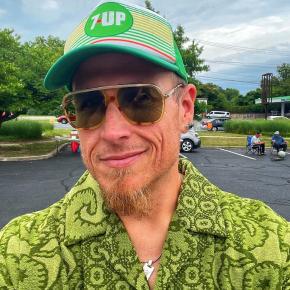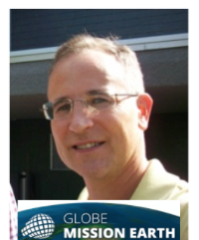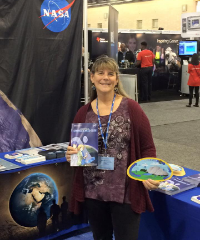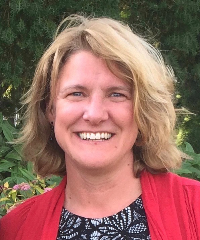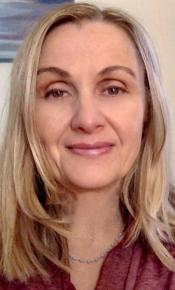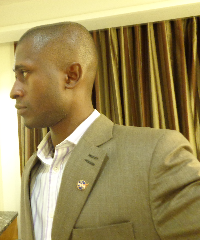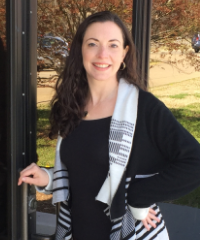Community Blogs
Community Blogs
Discover how the GLOBE community is engaging in all things GLOBE through the community blog posts below.
Learn how to create a GLOBE community blog post.
Filter By:
Blogs List
Mr. Jeff Bouwman and his Shumate Middle School students are NASA GLOBE ENSO Student Research Campaign superstars. Check out what they have been doing in the video below!
Shumate Middle School was the first location for a new WeatherSTEM program, including a weather station, cloud camera, and an agricultural station. Learn more in the video below!
Read More »
Posted in:
Field Campaigns:
EL NIÑO
Investigation Areas:
ATMOSPHERE
EARTH AS A SYSTEM
HYDROSPHERE
PEDOSPHERE (SOIL)
BIOSPHERE
Primary Audience:
TRAINERS
TEACHERS
STUDENTS
PARTNERS
SCIENTISTS
ALUMNI
COUNTRY COORDINATORS
Check out the wonderful ENSO Introductory Video from the National Weather Service Office in Bismarck, North Dakota. USA!
Also, to gain a more in-depth knowledge of the science of ENSO, please visit our friends at the State Climate Office of North Carolina. The have some excellent ENSO information, with links to some pertinent external expertise.
Posted in:
Field Campaigns:
EL NIÑO
Primary Audience:
TRAINERS
TEACHERS
STUDENTS
PARTNERS
SCIENTISTS
ALUMNI
COUNTRY COORDINATORS
Heavy rains, floods and thunderstorms have affected thousands of families in Perú since January 14 th , 2017. Apparently, Peruvians were not prepared to face this strong natural events as well as their later consequences: Overpopulation of mosquitos that spread dengue and other diseases as chikungunya virus, reduction of some important crops (rice, banana, yucca, yellow corn, avocado, cotton, asparagus, sugar cane, mango, grapes, alfalfa and lemon) (El Comercio, 2017 a ) and damages in many public facilities (bridges and roads) and private property (houses) - 100000 victims, 157000 houses ...
Posted in:
Event Topics:
CAMPAIGNS AND PROJECTS (IOPS, ETC)
Field Campaigns:
EL NIÑO
SMAP
GLOBE Science Topics:
CLIMATE
GLOBE Working Groups:
SCIENCE WORKING GROUP
Investigation Areas:
EARTH AS A SYSTEM
HYDROSPHERE
PEDOSPHERE (SOIL)
ATMOSPHERE
BIOSPHERE
In the fall of 2016, the students in my Weather and Climate class, GEPL 4490/5490, at the University of Toledo developed projects based on El Nino. The students in class were give the task to look at GLOBE data from a part of the world in which El Nino has an effect. The students were also tasked to do research on El Nino and La Nina to see what it is.
The students looked at the following locations:
Taiwan 2015 – Nicole Jablonski, Bailey Hafner, Cortnee Halpin
Japan 1998 – Sean Smith,
Australia 1998 – Madhusanka Jayawardhana, Josh Coll, and Justin Maluchnik ...
Posted in:
Scientists rely on research, statistical models, and climate forecast models to help them determine upcoming natural events.
Currently, scientists are have a difficult time deciding if and when the potential big El Niño event will happen. It will happen in 2017, but will it be the Summer or Fall?
"Right now, many climate forecast models do predict the development of a full-fledged El Niño during this summer or fall. It’s likely that these models are acting on the much warmer-than-average waters near the coast of South America—the “Coastal El Niño" says Anthony Barson in his NOAA ...
Posted in:
Curriculum:
STEM
ASSESSMENT AND EVALUATION
EDUCATION RESEARCH
LANGUAGE CULTURE AND ARTS
SCIENCE AND MATH
TECHNOLOGY
Field Campaigns:
EL NIÑO
SMAP
Investigation Areas:
ATMOSPHERE
EARTH AS A SYSTEM
HYDROSPHERE
PEDOSPHERE (SOIL)
BIOSPHERE
Learning Activities:
EARTH AS A SYSTEM
ATMOSPHERE AND CLIMATE
LAND COVER/BIOLOGY
HYDROLOGY
SOIL
Primary Audience:
PARTNERS
SCIENTISTS
ALUMNI
COUNTRY COORDINATORS
TRAINERS
TEACHERS
STUDENTS
Just when you think that perhaps the weather systems are settling down- our amazing scientific instruments are able to detect a potential change! I never cease to be amazed at what we are able to learn about Earth's systems- both from the ground and from space!
This article from the New York Times just came across my newsfeed- " It's Like it Never Left: Another El Nino May be on the Way ".
In the article, it states that " Among the potential effects are wetter conditions across the southern United States, including Southern California; a drier Midwest; and drought in ...
Posted in:
Curriculum:
STEM
EDUCATION RESEARCH
SCIENCE AND MATH
Event Topics:
CAMPAIGNS AND PROJECTS (IOPS, ETC)
Field Campaigns:
EL NIÑO
GLOBE Science Topics:
EARTH SYSTEM SCIENCE
CLIMATE CHANGE
BACKYARD SCIENCE
CLIMATE
EARTH AS A SYSTEM
SCIENTIST SKILLS
GLOBE PROTOCOLS
GLOBE Working Groups:
EDUCATION WORKING GROUP
Investigation Areas:
ATMOSPHERE
EARTH AS A SYSTEM
HYDROSPHERE
PEDOSPHERE (SOIL)
BIOSPHERE
News Topics:
VIRTUAL SCIENCE FAIR
Primary Audience:
PARTNERS
SCIENTISTS
ALUMNI
COUNTRY COORDINATORS
TRAINERS
TEACHERS
STUDENTS
How do you ENSO?
Did you know that students from around the world are taking measurements as part of the NASA GLOBE ENSO Student Research Campaign?
Check out what's happening at the Medford Memorial Middle School in New Jersey, USA!
We are looking for YOUR videos, showcasing your students taking measurements that are part of the NASA GLOBE ENSO Student Research Campaign. (Note, you will need to have GLOBE photo releases for each of the students shown in your video. They can be found HERE .
Please contact Brian Campbell for more details and/or ...
Posted in:
Curriculum:
STEM
Field Campaigns:
EL NIÑO
SMAP
Investigation Areas:
ATMOSPHERE
EARTH AS A SYSTEM
HYDROSPHERE
PEDOSPHERE (SOIL)
BIOSPHERE
Primary Audience:
TRAINERS
TEACHERS
STUDENTS
PARTNERS
SCIENTISTS
ALUMNI
COUNTRY COORDINATORS
Consider the rain gauge used in GLOBE, CoCoRaHS, and other citizen science programs. Just four pieces plus 2 mounting screws – an inner graduated cylinder, an outer cylinder, a cap/funnel, and a mounting bracket. The area of the outer tube is exactly 10 times the areas of the inner tube and the cap/funnel, so the graduations on the inner cylinder can be spaced ten times further apart. Thus, 0.2 mm of rain fills the inner tube to a depth of 2.0 mm, which one can read.
In addition, if heavy rainfall fills the inner cylinder, the rest of the rainfall overflows into the outer cylinder, ...
Posted in:
Curriculum:
STEM
Field Campaigns:
EL NIÑO
GPM
GLOBE Science Topics:
BACKYARD SCIENCE
GLOBE PROTOCOLS
Investigation Areas:
ATMOSPHERE
Primary Audience:
TEACHERS
STUDENTS
ALUMNI
Please welcome Guest Blogger Shona Emery , a GLOBE 5th/6th Grade STEAM Teacher from Ellis School in Fremont, New Hampshire.
This blog is the fourth in a series of posts by GLOBE teachers sharing classroom experiences to support the student research process. The series is supported by NSF funding for the United States Regional Student Research Symposia . If you are a teacher interested in contributing, please contact Haley Wicklein for more information. Specifically, we would love to hear from teachers who can share challenges and advice around the topic of student data ...
Posted in:
Curriculum:
SCIENCE AND MATH
Event Topics:
SCIENCE SYMPOSIA AND FAIRS
GLOBE Science Topics:
SCIENTIST SKILLS
GLOBE PROTOCOLS
GENERAL SCIENCE
Investigation Areas:
DISSOLVED OXYGEN
FRESHWATER MACROINVERTEBRATES
HYDROSPHERE
WATER TEMPERATURE
WATER TRANSPARENCY
PH
Learning Activities:
PRACTICING YOUR PROTOCOLS
Primary Audience:
TEACHERS
Teacher's Guide:
DATA SHEETS
UPPER PRIMARY: 3-5
MIDDLE: 6-8
SITE DEFINITION SHEETS
PROTOCOL INSTRUCTIONS
FIELD GUIDES
I have been focusing my GLOBE efforts on the organizing the Midwest Student Research Symposium. I am very excited that I get to host the event at Purdue University this year. If you are from the U.S. Midwest please attend our event. Even if you do not have students entering (it’s not too late!) you can see how students are using GLOBE data.
As a U.S. Partner Forum member I have the honor and privilege to be on the GLOBE Strategic Planning Committee. Knowing that GLOBE is an international program is one thing, but to be in the same room as many amazing and diverse persons ...
Posted in:
Please welcome Guest Blogger Ellen O'Donnell , a GLOBE teacher from Deerfield Community School in Deerfield, New Hampshire .
This is the next blog in a series of posts by GLOBE teachers sharing classroom experiences to support the student research process. The series is supported by NSF funding for the United States Regional Student Research Symposia . If you are a teacher interested in contributing, please contact Haley Wicklein for more information.
Thank you to Ellen for sharing! This is a picture of Ellen's students attending the Northeast & Mid-Atlantic ...
Posted in:
Curriculum:
ASSESSMENT AND EVALUATION
SCIENCE AND MATH
Event Topics:
SCIENCE SYMPOSIA AND FAIRS
GLOBE Science Topics:
SCIENTIST SKILLS
News Topics:
VIRTUAL SCIENCE FAIR
Primary Audience:
TEACHERS
PARTNERS
COUNTRY COORDINATORS
Hello GLOBE friends!
The Evaluation Working Group has recently shared with you the results of the 2015 survey that was sent to the GLOBE teachers. The results from this survey, along with the results from the Annual Partner Survey provided us with useful information as to how to better support GLOBE in the classroom. Among other things,. the feedback we had from the teachers was that they are asking for evaluation tools they can use in their classrooms and for guidance on how to use these tools.
During our discussions in the Working Group we thought about this ...
Posted in:
This time was my first visit to Trinidad and Tobago and to the LAC region. The visit was first of its kinds, knowing vividly that Africans and the People of Trinidad and Tobago have so many things in common in terms of Geography and Historical antecedent. The motivation for my visit to Trinidad and Tobago started during the 17 th GLOBE Annual meeting at Maryland. Initially, it was just a brief discussion with Henry Saunders (Country Coordinator, GLOBE Trinidad and Tobago). However, after a year, I met Mr. Michael at GLOBE Expedition in New Delhi, India where we had in-depth ...
Posted in:
GLOBE Science Topics:
MEETINGS/CONFERENCES
GLOBE Working Groups:
SCIENCE WORKING GROUP
Investigation Areas:
PEDOSPHERE (SOIL)
Primary Audience:
TEACHERS
STUDENTS
SCIENTISTS
ALUMNI
COUNTRY COORDINATORS
Concerns regarding the impact of global warming on vector-borne diseases have intensified interest in the relationship between atmospheric factors and dengue fever incidence. Global climate change poses the threat of serious social upheaval, population displacement, economic hardships, and environmental degradation. Changes in temperature, rainfall and relative humidity have potential to enhance vector development, reproductive and biting rates, shorten pathogen incubation period and encourage adult longevity. In addition, changes in wind direction, velocity and frequency will have an ...
Posted in:
GLOBE Science Topics:
CLIMATE CHANGE
GLOBE PROTOCOLS
Investigation Areas:
HYDROSPHERE
Learning Activities:
HYDROLOGY
Primary Audience:
TEACHERS
STUDENTS
Stipend Information
The site set up stipend has been extended a month! If you are a GLOBE trained teacher in South Dakota, set up a site in in the GLOBE database in preparation for data collection in April to receive a $50 stipend.
The site set up can be for any protocol, even one you are currently doing. The only requirement is that you set up a new site. For example, if you are currently monitoring water quality you can set up an additional site for water quality OR you can add another protocol such as land cover , green up/green down , or soil temperature to ...
Posted in:
Event Topics:
WORKSHOPS
GLOBE LEARNING EXPEDITIONS
COMPETITIONS
SCIENCE SYMPOSIA AND FAIRS
Primary Audience:
TEACHERS
PARTNERS
Please welcome Guest Blogger Jayme Margolin-Sneider , a GLOBE 6-8 grade science teacher and STEM Advisor from Westview Middle School in Longmont, Colorado.
This is the second in a series of posts by GLOBE teachers sharing classroom experiences to support the student research process. The series is supported by NSF funding for the United States Regional Student Research Symposia . If you are a teacher interested in contributing, please contact Haley Wicklein for more information.
Thank you to Jayme for sharing this!
Last year, I had two different groups of ...
Posted in:
Curriculum:
SCIENCE AND MATH
Event Topics:
MEETINGS
COMPETITIONS
SCIENCE SYMPOSIA AND FAIRS
GLOBE Science Topics:
SCIENTIST SKILLS
GLOBE PROTOCOLS
GENERAL SCIENCE
DATA INCLUDED
MEETINGS/CONFERENCES
News Topics:
COMPETITIONS
MEETINGS
REGIONS
Primary Audience:
TEACHERS
STUDENTS
PARTNERS
Usually, scientific issues are difficult to understand, most of the time because they are presented as a collection of facts with a lot of information to be analyzed at the same time that does not allow the student´s learning in easy way, because it is necessary a big memory and reasoning capacity of many elements in a short time. It demands the investment of long time to learn and short time to forget (Negrete and Lartigue 2004).
On the other hand, Storytelling is considered a powerful educative tool because it improves student´s comprenhension about facts, along the ...
Posted in:
GLOBE Working Groups:
SCIENCE WORKING GROUP
While we wait for SAGE to get turned on, here are high school activities on SAGE to bring out the STEM.
After launch on Saturday was aborted, we are excited to share that SAGE did successfully launch to the space station on board a Falcon 9 Rocket on February 19. You can watch a video of the launch here .
So now that it hitched a ride into space, now what? Well, we have to catch it. The SAGE instrument is still sitting inside of the SpaceX Dragon spacecraft. A planned rendezvous to then dock with the International Space Station was planned for today but ...
Posted in:
Currently, we are in an ENSO-neutral period called "La Nada." La Nada is the midpoint between an El Niño and La Niña. This occurs when the ocean temperatures in the Pacific Ocean are near average.
The "in-between" ocean state can be frustrating for long-range forecasters. "It's like driving without a decent road map — it makes forecasting difficult," said climatologist Bill Patzert of NASA's Jet Propulsion Laboratory.
With this said, scientists are now saying that we currently have a 50% chance of a return of El Niño in approximately 6 months. This would coincide with the Atlantic ...
Posted in:
Field Campaigns:
EL NIÑO
Investigation Areas:
ATMOSPHERE
EARTH AS A SYSTEM
HYDROSPHERE
PEDOSPHERE (SOIL)
BIOSPHERE
Primary Audience:
TRAINERS
TEACHERS
STUDENTS
PARTNERS
SCIENTISTS
ALUMNI
COUNTRY COORDINATORS
One of the important aspects of a scientist's job is to look at the data that was collected and try to make sense of it in order to better understand natural phenomena. With the ENSO Student Research Campaign, we have a unique opportunity to analyze data and use the analysis to help us better understand the impact of the ENSO cycles on weather and climate in locations all around the world.
I was looking at some of the data that many of our wonderful GLOBE teachers have sent during the ENSO campaign, and I noticed that we had data analyses sent to us from different ...
Posted in:
Curriculum:
SCIENCE AND MATH
Event Topics:
CAMPAIGNS AND PROJECTS (IOPS, ETC)
Field Campaigns:
EL NIÑO
GLOBE Science Topics:
EARTH AS A SYSTEM
SCIENTIST SKILLS
EARTH SYSTEM SCIENCE
CLIMATE CHANGE
CLIMATE
Investigation Areas:
ATMOSPHERE
EARTH AS A SYSTEM
HYDROSPHERE
News Topics:
SCRC RESEARCH
Primary Audience:
TEACHERS
STUDENTS
SCIENTISTS
ALUMNI
—
20 Items per Page






